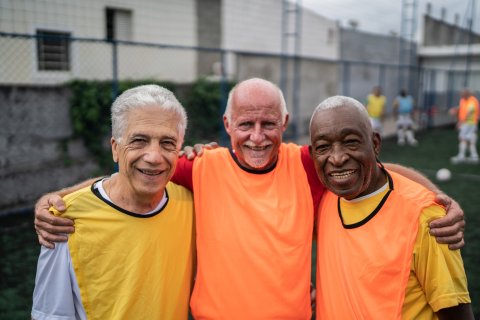Etnic Sorting in football

Sports clubs and certainly amateur football clubs have become increasingly diverse in terms of ethnic composition in recent decades. So far, no large-scale research has been conducted on the consequences of this. For his PhD research, Arend van Haaften studied data on football club membership of over two million Dutch people over a ten-year period.
On Friday 20 December Arend van Haaften successfully defended his PhD thesis Ethnic sorting in football. A quantitative analysis of ethnicity and membership in Dutch amateur football at the Utrecht University School of Governance (USG).
Preference for club with relatively many members of own ethnic background
Van Haaften shows that ethnic background plays a decisive role in the likelihood of people becoming and staying members of a football club. Members of all backgrounds prefer a club with relatively many members of their own ethnic background and, in addition, few ethnic differences between members. This not only leads to a higher turnover among members from migrant backgrounds and ethnic segregation between clubs, but also to additional challenges for clubs with greater diversity.
Mutual differences are sometimes complicated or uncomfortable
In fact, the overall number of members from minority groups participating in amateur football has continued to rise. Some groups even show higher membership rates than citizens with a Dutch background. While this is certainly a reason for optimism, policymakers and practitioners should also be wary of the fleetingness of membership ties. Indeed, Van Haaften's research shows that as the ethnic diversity of clubs increases, membership turnover also increases. For it is precisely this diversity and not, as is often thought, the 'culture' of minority groups that leads to higher dropout rates. Ethnically diverse clubs will find it more difficult to acquire a sufficiently stable membership base, which may jeopardise club continuity.
Mutual differences are sometimes complicated or uncomfortable - for everyone, this is not linked to a particular ethnic background,
says Van Haaften. It is good to be aware of that, also as a governing body or sports association. A diverse member base and environment bring additional challenges to an association. That does not mean that we should avoid that diversity - if we even could at all - but rather that we should recognise the need to put extra energy into it. Those associations and their members deserve that too.
Recommendation: additional support for clubs
Based on his research, Van Haaften recommends that the government and sports organisations provide clubs with additional support so that they can continue to serve as one of the most important sports providers and meeting places for both current and future generations from all ethnic backgrounds.
Such support could come from the state, municipalities, sports federations and local sports organisations, for instance in the form of club support or the temporary appointment of paid staff. They could advise and help clubs in recruiting and retaining new members, filling vacant positions and drafting future-proof policies. In addition, specific attention could be paid to an inclusive club culture in which members from different backgrounds feel comfortable. After all, not every club can achieve this on its own.
Relevance for other organisations
The starting point for Arend Van Haaften's doctoral research was the question what effect ethnic diversity has on the interrelationships in groups and organisations we create together. The results of his research are therefore relevant not only for football clubs and other sports associations but also for all kinds of other organisations, both public and private.

